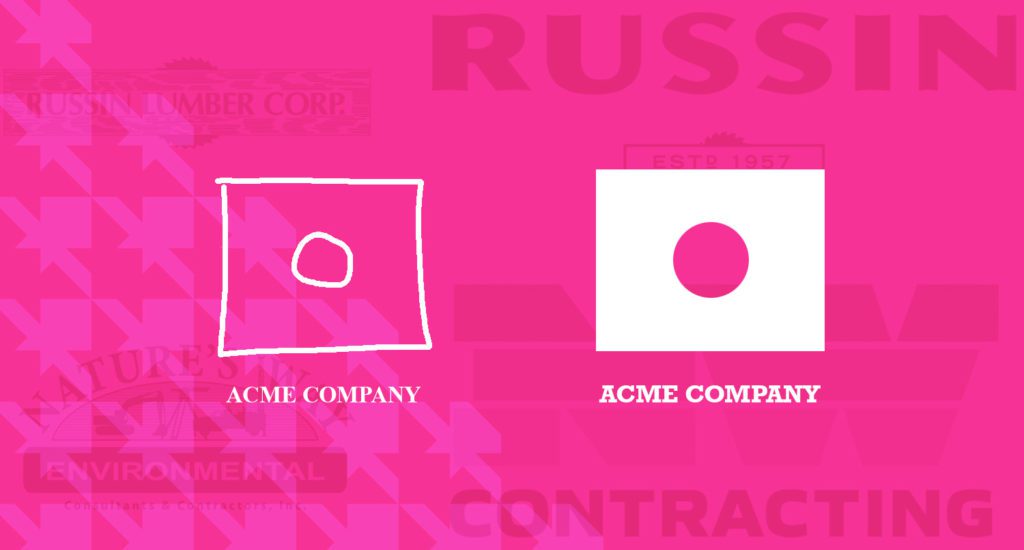How to Approach Rebranding Logo Design For a Well-Known Brand

There’s always a bit of apprehension when considering how to approach rebranding logo design for a well-known brand. Usually due to the age, reputation, and recognition of the company in the markets it serves. So when it comes to rebranding the company to meet the needs of an evolving market, shifting customer base, and innovations in technology, the idea of updating the look and feel of the brand, especially the logo, triggers fear of losing business due to changing the brand.
Though, as the new generations start to elevate themselves to executive leadership positions within companies, they are looking to reinvent the company to set the stage for a new phase of growth. The timing couldn’t be more perfect. A typical hurdle that needs to be cleared, in the case of a multi-generational company, is satisfying the previous ownership’s desire to maintain the brand’s equity and history in any updates to a new brand identity and strategy.
Fortunately, in this scenario there is a way that everyone can win so that when rebranding logo design for a well-known brand, the history and recognition is not completely lost in a redesign.
Take a look at these two examples for Luminus clients NW Contracting (formerly Nature’s Way Environmental) and Russin (formerly Russin Lumber). Both, multigenerational companies with dated brand identities, marketing materials, and growing services. These are great examples of maintaining brand recognition, while updating the presentation and positioning of the brand as a whole to be implemented into modern marketing communications strategies.
Now let’s dive into a few tactics that were used to maintain brand equity while going through this process for rebranding logo design.
Modifying The Company Name
Renaming a company during a rebranding process isn’t always part of the plan, but for the few times it is, it’s important to consider this question. Is this rebranding and renaming due to a complete business shift? If so, it may not matter if the name is recognizable anymore, depending on the reason for the rebrand, it may actually be beneficial. For this article though, let’s focus on renaming due to a refined approach to business or an expansion of business.
One way to maintain brand recognition and pay homage to the past is to retain an element of the prior name so that a clear explanation and reasoning can be promoted during the brand’s relaunch into the market. This opens up opportunities for developing content about why and how this decision was made, offering additional support for the launch.
Take the Luminus examples above. NW Contracting retained the “Nature’s Way” by using the initials paired with their new positioned approach to the market. Russin, dropped the “Lumber” from their name as the business has grown over decades to provide much more than wood products to their customers, but retained the family name for continuity.
Including Recognizable Icons
A great example of this type of approach would be big brands like Microsoft, Pepsi, and Coca-Cola. You’ve likely experienced the multiple rebrands that these companies have gone through, yet you still know who they are and can easily identify them on a store shelf or in a TV commercial, just by the iconic graphics used. The same goes for any small business.
In the examples above you see this in the Russin logo’s redesign where the iconic saw and board shape are repurposed as a complimentary item and no longer the focus of the logo lockup. For NW Contracting, this is a bit more subtle, but still relevant in that the use of stacked lines brings the old sun graphic into the new logo, despite the sun no longer being a part of the design.
Retaining Brand Colors
This is a fairly straight forward aspect of tying a new rebranding logo design to a new look and feel. There are two ways to approach this element of continuity. First, the exact same colors could be used. If the color palette holds up and presents in a modern way that meets the expectations of the target audiences, roll with it. Alternatively, if colors were less strategically picked early on, now is the time to modernize the palette by altering the warmth or coolness of the set of colors. This allows for a similar look to the old brand, but in a much more presentable way for the new generation.
In the Luminus examples above, you will see color alterations for each client’s logo and visual identity palette, but they are ultimately the same colors from the original logos. Adding depth to the colors gives them a modern look that previously wasn’t coming through.
Finding or Creating Similar Fonts
For logos that are driven heavily by typography or have a dominant type feature, finding or creating a similar modern (not trendy) font can also bridge the gap between the two generations. You can look to the Microsofts and Pepsis of the world again for a relatable option.
The Luminus example above for Russin uses this approach. The font is hand drawn, but resembles the previously used font within the board lockup in the old logo.
In summary, approaching a rebranding logo design project as part of a visual identity overhaul does not need to come with fear of an unrecognizable design through a new visual presentation. A good design team and brand strategy team can successfully bridge the gap between the historical brand and the brand of the future so that past ownership, new ownership, and target customer audiences alike all benefit from the work.